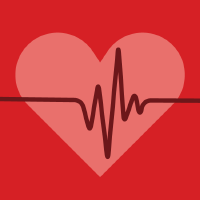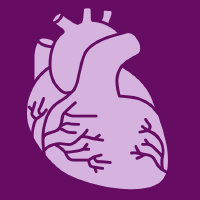Topic Menu
► Topic MenuTopic Editors


Mechanical Circulatory Support in Heart Failure

Topic Information
Dear Colleagues,
Acute or chronic heart failure is associated with high mortality, and therapeutic options might be limited due to the manifestation of the disease. Mechanical circulatory support (MCS) systems are frequently used in therapy-refractory heart failure, and the development of new strategies is necessary to enhance survival. Nowadays, direct cardiac recovery with decompression of the right/left ventricle gains more importance. Therefore, simultaneous utilization of MCS systems is a novel promising option addressing circulatory support and cardiac recovery. Moreover, optimization of goal-directed drug therapy is essential in patients with MCS systems. In this regard, a multimodal therapeutic approach in patients with MCS is essential.
This Topic will cover the following important aspects of MCS systems in heart failure:
- Concomitant use of MCS systems in heart failure;
- Type of left ventricular decompression;
- Long-term options in patients with failure of short-term systems;
- Adjunctive medical therapy during MCS use;
- Strategies of short-term systems (bridge-to-recovery, bridge-to-bridge).
Research articles, review articles, and communications are invited.
Prof. Dr. Anton Sabashnikov
Dr. Ilija Djordjevic
Topic Editors
Keywords
- ECMO
- LVAD
- heart failure
- cardiogenic shock
- LV unloading
Participating Journals
| Journal Name | Impact Factor | CiteScore | Launched Year | First Decision (median) | APC |
|---|---|---|---|---|---|

Diagnostics
|
3.0 | 4.7 | 2011 | 20.5 Days | CHF 2600 |

Hearts
|
- | - | 2020 | 18.5 Days | CHF 1000 |

Journal of Cardiovascular Development and Disease
|
2.4 | 2.6 | 2014 | 22.9 Days | CHF 2700 |

Journal of Clinical Medicine
|
3.0 | 5.7 | 2012 | 17.3 Days | CHF 2600 |

Journal of Vascular Diseases
|
- | - | 2022 | 24.3 Days | CHF 1000 |

MDPI Topics is cooperating with Preprints.org and has built a direct connection between MDPI journals and Preprints.org. Authors are encouraged to enjoy the benefits by posting a preprint at Preprints.org prior to publication:
- Immediately share your ideas ahead of publication and establish your research priority;
- Protect your idea from being stolen with this time-stamped preprint article;
- Enhance the exposure and impact of your research;
- Receive feedback from your peers in advance;
- Have it indexed in Web of Science (Preprint Citation Index), Google Scholar, Crossref, SHARE, PrePubMed, Scilit and Europe PMC.
Published Papers (10 papers)
Planned Papers
The below list represents only planned manuscripts. Some of these manuscripts have not been received by the Editorial Office yet. Papers submitted to MDPI journals are subject to peer-review.
- Impact of concomitant IABP and ECMO therapy on endothelial function – results of a large animal model
- Fluid management in ECMO therapy – analysis of an experimental pig model

